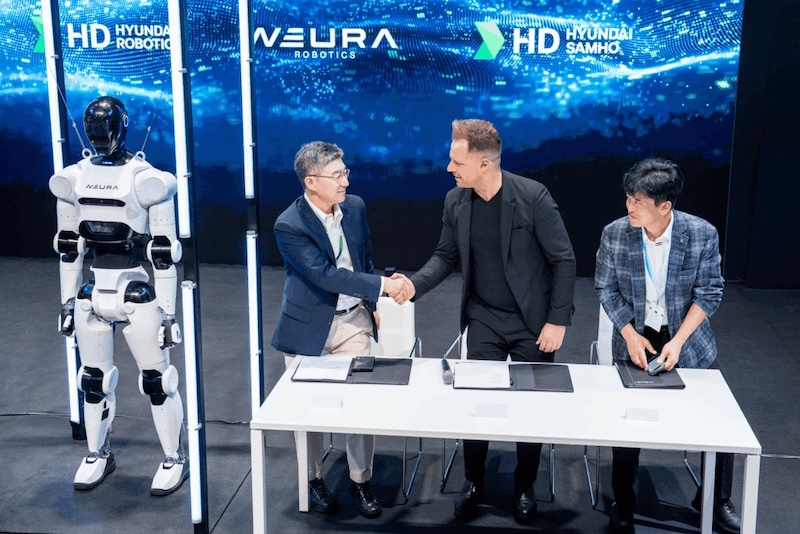Neura Robotics has signed a strategic agreement with HD Hyundai Samho and HD Hyundai Robotics to develop and test humanoid and quadruped robots for use in the shipbuilding industry.
The partnership, announced during the Automatica trade show in Munich at the end of June, brings together German cognitive robotics expertise and Korean shipbuilding and automation capabilities.
The companies say the goal is to deploy intelligent robotic systems to boost safety, productivity, and operational efficiency in one of the world’s most demanding industrial environments.
As part of the collaboration:
- HD Hyundai Samho will offer real-world demonstration sites at its shipyards, helping to assess the practical applicability of robotics in daily shipbuilding operations.
- HD Hyundai Robotics will contribute technical support and validation tools, including data for path learning and its experience in welding automation.
- Neura Robotics will supply its cognitive robotics platforms, including its humanoid robot “4NE1”, which can perceive its environment, learn, and make decisions in real time.
David Reger, CEO and founder of Neura Robotics, says: “This strategic partnership once again demonstrates the versatility of cognitive robots – even in one of the most demanding industrial environments in the world.
“Together with Hyundai, we are laying the groundwork for entirely new paths in intelligent automation.”

Sanghun Ryu, executive director at HD Hyundai Samho, says: “We will take a leading role in creating a safer and more productive shipyard environment by applying specialized welding robots that meet the diverse quality requirements of the shipbuilding industry.”
Younghoon Song, executive director at HD Hyundai Robotics, says: “This agreement promotes diverse technological collaborations and highlights our leadership in developing robot-based automation solutions for shipyards. Our goal is to contribute to the long-term competitiveness of the shipbuilding industry.”
The companies say the joint project comes at a critical time, as the shipbuilding industry faces a growing shortage of skilled labor.
By combining robotics and automation, the partners hope to maintain long-term competitiveness and support the transition to intelligent, automated shipyards.

